Mastering Pool Chemistry: Guide to Sustaining Free Chlorine Levels
February 16th, 2024
February 16th, 2024
One summer evening, I found myself gazing into the shimmering waters of my backyard pool, only to realize it had become a rather unplanned science experiment. The water, once clear, was now a murky shade that screamed for help. This was my first introduction to the world of pool chemistry, and more specifically, to the vital role of free chlorine. A pool without adequate chlorine soon becomes a breeding ground for bacteria and algae, turning leisure into labor.
Maintaining the right balance of free chlorine in a pool is not just about avoiding murkiness; it's about ensuring swimmer safety and comfort. Chlorine, often viewed merely as a pool sanitizer, plays a critical role in oxidizing contaminants and preventing the spread of waterborne illnesses. However, achieving the ideal chlorine level demands more than dumping chemicals into the water. It requires an understanding of factors like sun exposure, pool usage, and water temperature, all of which directly impact chlorine levels.
Reflecting on my own chlorine conundrums, I learned that proactive measures pay off. Regular testing, adjusting pH levels, and understanding the interplay between various pool chemicals are crucial steps. Through a blend of personal experience and strategic action, maintaining sparkling, safe pool water becomes a manageable task rather than a daunting challenge. This guide will unravel the essentials of elevating free chlorine levels, transforming your pool into the oasis you envision.
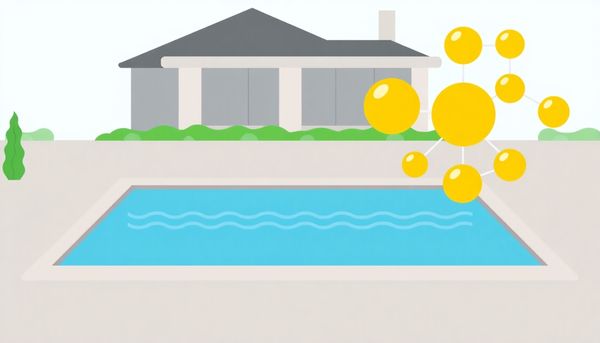
When the sun casts its golden rays over a shimmering pool, it’s easy to forget that beneath the surface, chemistry is at play. Free chlorine, the unsung hero of pool maintenance, is crucial for keeping the water clean and safe. Yet, despite adding chlorine tablets or granules, those stubborn low levels might persist, leaving you puzzled. This is where shocking your pool becomes a game-changer.
Shocking isn't just about adding more chlorine; it’s about giving your pool a powerful boost to reset its chlorine levels. Start with a chlorine-based shock, especially if readings are dipping below 1 ppm. Using calcium hypochlorite, or cal-hypo, is a popular choice due to its swift action and effectiveness in combating algae and bacteria. Remember, precision matters: add three pounds of shock per 10,000 gallons of water, allowing the chlorine to penetrate and destroy contaminants.
The timing of your shock treatments also plays a crucial role. Regular shocks, especially after heavy use or rainstorms, can prevent the dreaded chlorine demand—when contaminants overpower your chlorine supply. Additionally, be mindful of sunlight, which can deplete chlorine levels. Testing and stabilizing cyanuric acid levels can protect your chlorine from the sun’s UV rays, ensuring it remains potent.
Through consistent, well-timed shocking, you can maintain optimal free chlorine levels, ensuring your pool remains a sparkling oasis of relaxation and fun. So, embrace the science, and let your pool shine with clarity and cleanliness.
Understanding why free chlorine levels drop is crucial for every pool owner aiming to maintain a pristine swimming environment. Often overlooked, the root causes of chlorine depletion can be surprisingly varied. For instance, imagine hosting a weekend pool party. After a day of sunscreen-slathered guests and cannonballs, your pool is left in a state of chaos. The influx of swimmers introduces organic contaminants like body oils and lotions, which can quickly overwhelm your pool's chlorine reserves, causing a dip in free chlorine levels.
Environmental factors also play a significant role. Heavy rainfall, for example, not only introduces contaminants from runoff but also dilutes the pool’s existing chlorine concentration. In one instance, after a particularly rainy week, I noticed my usually clear pool water starting to look murky—a telltale sign of a chlorine deficit. The solution was straightforward yet essential: addressing the chlorine demand with a proper shock treatment.
Moreover, chemical imbalances can be culprits. Cyanuric acid, the stabilizer that protects chlorine from the sun’s UV rays, needs to be in the right range. An imbalance can either shield chlorine too well or not enough, leading to inefficiency. Regular testing is vital to ensure CYA levels remain optimal. Additionally, if you're using a saltwater generator, low salt levels or a malfunctioning salt cell can also lead to insufficient chlorine production. Keeping an eye on these factors ensures your pool stays in top condition, ready for a refreshing swim anytime.
Chlorine demand can be a mysterious adversary for pool owners, especially when the usual tricks seem to lose their magic. It's a phenomenon where your pool water demands more chlorine than usual, stubbornly keeping levels low despite your best efforts. This situation can arise from a confluence of factors such as heavy bather loads, organic debris, or weather-induced woes like rainwater runoff. Facing persistent chlorine demand, one effective remedy is to perform a triple shock treatment using calcium hypochlorite. This involves adding three pounds of cal-hypo shock per 10,000 gallons of water, effectively overwhelming contaminants and restoring balance to your pool's chemistry.
An essential step in navigating these waters is understanding the pool's environment. Regular testing of the pool's chemical levels, including pH and cyanuric acid, is crucial. Low cyanuric acid levels, for instance, leave chlorine vulnerable to rapid depletion under the sun's UV rays. Conversely, high levels can impede chlorine’s effectiveness. Therefore, maintaining these levels within the optimal range ensures that your chlorine can work efficiently.
In parallel, routine maintenance like skimming and cleaning plays a vital role. Removing debris and organic matter prevents them from consuming your chlorine reserves. For those with saltwater pools, regularly checking the salt levels and ensuring the salt cell is functioning properly can prevent unnecessary dips in chlorine levels. Thus, by embracing these proactive measures, chlorine demand becomes a manageable opponent, allowing you to enjoy a crystal-clear pool.
In the world of pool maintenance, stabilizing chlorine with cyanuric acid (CYA) is akin to giving your pool's sanitizer a dependable shield against the sun's relentless UV rays. Think of CYA as the unsung hero that prevents your chlorine from vanishing into thin air, ensuring it remains active in fighting off those pesky contaminants. Without it, unprotected chlorine dissipates rapidly under sunlight, leaving your pool vulnerable.
One summer, my own backyard pool became a battleground. Despite adding chlorine regularly, I couldn't figure out why the levels kept plunging. It was only after a friend suggested testing for CYA that I found the culprit: almost non-existent stabilizer levels. Once I corrected that by adding CYA, the chlorine levels stabilized, and the water stayed crystal clear, even during the sunniest days.
Regular testing is key. Aim to keep CYA between 30 and 50 ppm, as too much can hinder chlorine's effectiveness, creating a situation where you are, paradoxically, less protected. Be cautious though; using trichlor tablets can gradually increase CYA levels, so periodic monitoring is essential. If your CYA creeps too high, partial water replacement might be necessary to restore balance.
In essence, maintaining the right CYA level is not just about protecting chlorine—it's about ensuring your pool remains a safe, inviting oasis throughout the swim season.
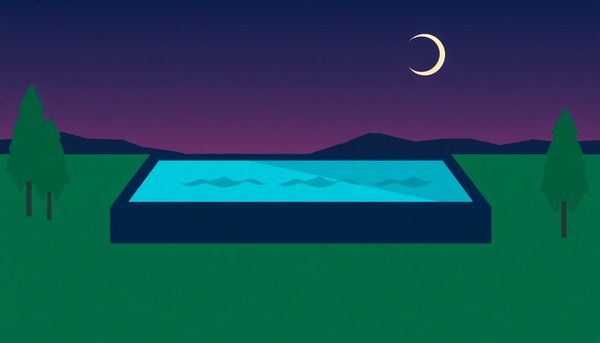
Tackling the persistent issue of chlorine demand in a pool often feels like trying to catch a shadow. After all, you may have diligently added chlorine tablets and even resorted to a shock treatment, only to find your free chlorine levels still languishing below the ideal 1 to 3 parts per million (ppm) range. This conundrum is known as chlorine demand—when your pool’s appetite for chlorine surpasses what’s being provided, leading to ineffective sanitation.
Chlorine demand usually stems from factors like high bather loads, organic debris, or even the remnants of last night’s storm runoff. These elements increase the organic and chemical contaminants in your pool, forcing your chlorine to work overtime. The solution lies in an aggressive approach: triple shocking your pool with calcium hypochlorite (cal-hypo). This powerful shock treatment demands three pounds of cal-hypo per 10,000 gallons of water, swiftly targeting algae, bacteria, and other organic pollutants.
Anecdotally, after a particularly intense summer pool party, a friend tried this method and was astounded by how quickly the water regained its crystal-clear appearance. However, it’s not just about the immediate effect; maintaining those optimal chlorine levels requires regular checks on your pool’s chemistry. Ensure that pH, alkalinity, and cyanuric acid levels are balanced to keep your pool resilient against chlorine demand's relentless pull. This ensures your pool remains a sparkling oasis, inviting and safe for every swim.
The conundrum of low chlorine levels in your pool isn't just an inconvenience; it’s a potential breeding ground for unwanted guests like algae and bacteria. When faced with free chlorine levels dipping below 1 ppm, swift action is imperative. The invisible superheroes in your pool, chlorine molecules, are the frontline defenders against microscopic intruders. Without them, your pool’s turquoise allure could turn murky.
Consider the scenario where you’ve diligently added chlorine tablets or granules, but the needle on your test kit refuses to budge. A chlorine-based shock treatment is your first step—an infusion of potency to kickstart sanitization. However, if the levels stubbornly remain low, high chlorine demand might be the culprit. This often occurs when the pool has been neglected for a while, or after a heavy swimmer load or rainstorm, where contaminants flood the water.
Personal anecdotes ring true here. I remember a time after a family barbecue when, despite my efforts, the pool’s chlorine levels plummeted. It turned out the sunscreen, body oils, and general summer fun had overwhelmed the chlorine. The solution? A triple-dose of calcium hypochlorite shock. Not only did it restore balance, but it also reinforced the importance of regular maintenance checks.
Once the chlorine demand is addressed, ensure your cyanuric acid levels are optimal to protect chlorine from the sun’s rays. A consistent routine of testing and adjusting keeps your pool not just a tempting refuge but a safe one.
Boosting the free chlorine levels in your pool through effective shock treatments can feel a bit like magic, transforming murky waters into a sparkling oasis. The strategy begins with understanding that shocking isn't just about dumping chemicals in; it's about timing and precision. There’s a key moment when the sun dips below the horizon, when UV rays no longer gobble up chlorine as quickly. That’s the perfect time to launch your chlorine shock attack, allowing it maximum exposure to the water without interference.
Selecting the right type of shock is crucial. Calcium hypochlorite, or cal-hypo, is often the go-to option for its rapid dissolve rate and effectiveness in obliterating bacteria and algae. You’ll want to follow the rule of thumb: one pound of cal-hypo per 10,000 gallons of water. This ensures your pool hits that ‘chlorine breakpoint,’ the level necessary to oxidize contaminants effectively.
Once you've added the shock, patience becomes your ally. Allow the chemicals a full 8-12 hours to circulate, ideally overnight. Refrain from taking a quick dip during this period, as tempting as it might be. Afterward, check your pH and alkalinity levels to ensure they haven’t strayed too far from ideal ranges (7.4-7.6 for pH, 80-120 ppm for alkalinity).
Remember, consistency is key. Regular shocking, especially after heavy usage or rainstorms, prevents chlorine demand from creeping in. Embrace this routine, and you’ll maintain a pool that’s not just safe, but also inviting and crystal clear.
In the intricate dance of pool maintenance, optimizing chlorine stabilization is a crucial step. When free chlorine levels hover below the ideal 1-3 ppm range, your pool becomes a breeding ground for unwanted guests like algae and bacteria. Yet, despite your best efforts with chlorine tablets or shocks, levels may stubbornly refuse to rise. The solution lies in mastering the art of chlorine stabilization.
Cyanuric acid (CYA) acts as a bodyguard for your chlorine, shielding it from the sun’s harsh UV rays. Without this protective layer, chlorine evaporates more rapidly than you might realize, especially under intense summer sun. Regular testing of CYA levels is essential; maintaining a sweet spot between 30-50 ppm ensures your chlorine remains effective. Just like a sunblock for your pool, CYA prevents rapid chlorine depletion.
However, take heed—too much stabilizer can be counterproductive. Excessive CYA, often resulting from over-reliance on stabilized chlorine products like trichlor tablets, hampers chlorine efficacy. It’s akin to wearing sunglasses at night; they’re not needed and only obscure your vision. If CYA levels edge too high, partial water replacement might be necessary to restore balance.
By understanding and managing the delicate interplay between chlorine and cyanuric acid, you can maintain a pool that's not only crystal clear but also safe and inviting. Adjusting these levels is not just maintenance; it’s an art that keeps your pool sparkling and serene, ready for every joyful splash.
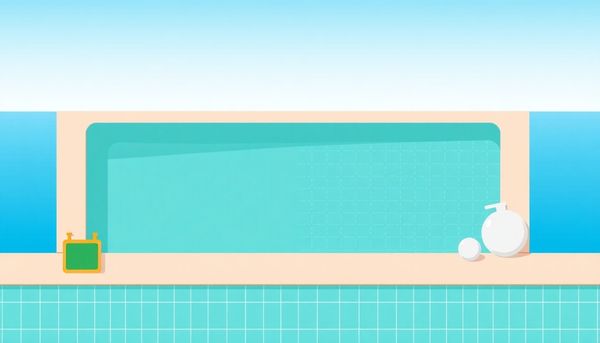
Understanding your pool's water chemistry is akin to deciphering a complex recipe. Each component plays a crucial role in crafting that perfect blend of sparkling, sanitized water. Before diving into any corrective measures to raise free chlorine levels, an initial and thorough testing of your pool’s chemistry is essential. This isn’t just about checking chlorine levels; pH, alkalinity, and cyanuric acid levels all contribute to the overall balance and effectiveness of your pool’s sanitizing efforts.
Start by using a reliable test kit or test strips to get an accurate measurement of your current water chemistry. Note any discrepancies in your pH and alkalinity, as these can greatly influence how your chlorine performs. For instance, if your pH is too high, chlorine becomes less effective, necessitating higher levels to achieve the same sanitizing power.
Once you have a clear picture, adjust each element accordingly. If the pH is off, use a pH reducer or increaser to bring it within the ideal range of 7.2 to 7.8. Similarly, ensure your alkalinity is between 80-120 ppm, as this helps buffer pH changes, stabilizing the chlorine efficacy.
As a personal tip from years of managing my own pool, I’ve found that keeping a regular log of chemical levels can unveil patterns, helping you anticipate and adjust quicker before any drastic imbalances occur. By maintaining meticulous attention to these chemical details, you pave the way for chlorine to do its job effectively, protecting your pool from unwanted guests like algae and bacteria.
Ever wonder why your pool water sometimes seems less inviting? When free chlorine levels dip below 1 ppm, it’s not just about losing that crystal-clear sparkle — it’s about opening the door to bacteria and algae. Raising those chlorine levels is crucial for both aesthetics and health. But how do you achieve this when traditional methods fall short?
First, check if your pool’s chlorine demand is higher than usual. This often happens after heavy use or weather events that introduce debris and organic material into the water. If standard chlorine additions aren't cutting it, consider super-chlorinating your pool. This involves using a chlorine shock treatment, specifically designed to boost free chlorine levels swiftly. Calcium hypochlorite, or cal-hypo shock, is highly effective for this task. Aim for about three pounds per 10,000 gallons of water to combat persistent bacteria and algae.
Yet, even after shocking, chlorine levels might remain stubbornly low. This could be due to high levels of combined chlorine or chloramines, which indicate your chlorine is being rapidly consumed. In this case, follow up with regular shocks and ensure your pool is free of debris and properly balanced in terms of pH and cyanuric acid.
For saltwater pools, it’s vital to regularly monitor and replenish the salt levels to ensure the salt cell can produce enough chlorine. Remember, maintaining free chlorine levels isn’t just a one-time fix but an ongoing process of monitoring and adjustment. By understanding and managing these elements, your pool will remain a safe and sparkling oasis.
The mystery of stubborn chlorine levels in pools often boils down to one culprit: chlorine demand. This sneaky phenomenon occurs when chlorine is devoured at a rate faster than it can be replenished, despite your best efforts with tablets or shocks. Various factors contribute to this ravenous chlorine appetite, such as heavy bather loads, debris, or the aftermath of a storm. If your pool has been sitting idle for the season, expect chlorine demand to be particularly hungry.
To combat this, a triple shock treatment using calcium hypochlorite, or cal-hypo shock, is your best ally. For every 10,000 gallons of water, three pounds of this potent shock can work wonders. It's designed to swiftly obliterate bacteria, control algae, and annihilate organic contaminants, restoring balance to your pool's ecosystem.
Personal experience tells me that monitoring cyanuric acid levels is equally crucial. This stabilizer protects chlorine from the harsh UV rays, ensuring it doesn’t vanish prematurely. Too much cyanuric acid, however, can handcuff chlorine's effectiveness, leaving your pool vulnerable. Regular testing and adjustments are key.
A little attention to detail goes a long way. Clean your pool of debris, maintain optimal chemical levels, and use a stabilizer wisely. With these strategies, your pool should maintain robust free chlorine levels, ensuring safe and sparkling waters for all.
Amidst the complexities of pool maintenance, the term "stabilization" might sound like just another task on your to-do list. However, when it comes to maintaining optimal free chlorine levels, understanding and utilizing stabilizers can be a game-changer. Imagine lounging poolside, knowing that your water is not just sparkling clear, but also efficiently sanitized. This is where cyanuric acid, often called a chlorine stabilizer, steps in as your unsung hero.
Cyanuric acid acts like sunscreen for your chlorine. Without it, UV rays from the sun would rapidly deplete your chlorine, leaving your pool vulnerable to bacteria and algae. However, like all things in pool chemistry, balance is key. You want your cyanuric acid levels to hover between 30 and 50 ppm. Above 50 ppm, and you risk inhibiting chlorine’s effectiveness, while too little leaves you at the mercy of the sun.
Testing your pool’s cyanuric acid levels should become as routine as skimming leaves or checking pH. If your pool has been struggling with low chlorine, despite regular dosing, stabilizer imbalances might be the culprit. By adjusting these levels, you create an environment where chlorine can perform its duties without being squandered by sunlight. This small adjustment can save you time, reduce costs on chemicals, and most importantly, ensure your pool is always ready for a safe swim.
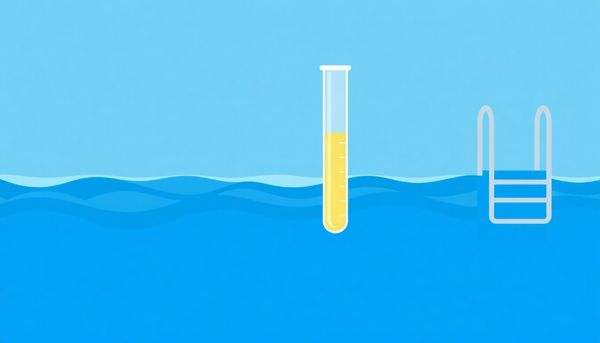
While it might seem like throwing in more chlorine is the solution when your pool levels are down, the key to keeping them stable is often hiding in plain sight: the chlorine stabilizer. Think of cyanuric acid (CYA) as your chlorine’s best friend, shielding it from the harsh rays of the sun. This stabilizer ensures that the chlorine you've added doesn't evaporate before it has a chance to do its job.
CYA levels should be maintained between 30 and 50 ppm for optimal chlorine protection. However, more isn’t always better. Excessive stabilizer can actually tie up the chlorine, rendering it ineffective. It’s similar to having a bodyguard who’s too overprotective, preventing the hero from stepping up when needed. Imagine swimming on a bright sunny day, only to find your chlorine levels plummeting because your stabilizer is out of balance.
I remember a summer when I learned this the hard way—after a week of relentless sunshine, my pool water turned cloudy despite my faithful chlorination routine. Testing revealed that my CYA was through the roof, working against me instead of with me. Draining some water and adding fresh, I was able to balance it out, and soon enough, my pool was crystal clear again.
Stabilizer is crucial, yet its role is a delicate one. Regular testing of both chlorine and CYA levels allows you to adjust proactively, keeping your pool safe and inviting. By managing these elements wisely, you can enjoy a sparkling pool without the constant battle of fluctuating chlorine levels.
Understanding why your pool's chlorine levels are persistently low can feel like unraveling a mystery. The sun, for instance, plays a role many overlook. During sunny days, ultraviolet rays can rapidly deplete chlorine, especially if your pool lacks a proper stabilizer like cyanuric acid. This powerful UV breakdown often leaves pool owners puzzled about disappearing chlorine tablets or granules.
High bather load is another culprit. If your backyard oasis becomes a frequent splash zone with guests or family, the chlorine works overtime to sanitize oils, sweat, and other organic matter introduced by swimmers. Similarly, after a social gathering or several days of heavy use, you may notice a significant drop in chlorine levels. Adding a heavier shock treatment post-party prevents this dip in sanitizing power.
Environmental factors contribute as well. Recent storms or heavy rains wash debris and organic matter into the pool, overworking your chlorine as it battles to maintain cleanliness. Frequent debris removal and post-storm shocks can help counteract this natural chlorine drain.
Lastly, equipment issues shouldn't be neglected. For those using saltwater chlorinators, checking the salt levels and ensuring the generator functions correctly is crucial. A malfunctioning salt cell or low salt concentration can lead to inadequate chlorine production, leaving your pool under-sanitized. Regular maintenance and vigilant testing ensure your pool remains a clear, inviting retreat.
In the world of pool maintenance, the role of cyanuric acid (CYA) often goes underappreciated. This chemical powerhouse acts as a sunscreen for chlorine, shielding it from the sun's ultraviolet rays. Without this protection, chlorine dissipates rapidly, leaving your pool vulnerable to bacteria and algae. On a sunny afternoon, chlorine levels can plummet if cyanuric acid is not present, akin to leaving ice cream out on a hot day.
When I first started managing my home pool, I couldn’t figure out why my chlorine levels kept dropping despite frequent shocking. My neighbor, an experienced pool owner, suggested checking the CYA levels. I remember feeling a bit skeptical, but after testing, I realized they were way below the recommended 30-50 ppm range. I added a stabilizer and, like magic, my chlorine levels steadied, even during the hottest days.
However, balance is key. Overdoing cyanuric acid can lead to chlorine lock, where chlorine becomes ineffective, much like trying to read a book with sunglasses at night. Regular testing and adjustments are crucial to keep CYA within the optimal range. So, by investing time in balancing your cyanuric acid levels, you're not just stabilizing chlorine; you're ensuring your pool remains a safe, inviting oasis all summer long.
Tackling the challenge of low free chlorine levels in your pool can feel daunting, yet the solution often lies in the artful application of a pool shock. This method, when done correctly, transforms your pool from a potential breeding ground for bacteria back into a sparkling oasis. For those who've tried adding chlorine with little success, the key to rejuvenating your water lies in reaching what's known as the “chlorine breakpoint.” This involves raising your free chlorine to levels ten times higher than normal, effectively disrupting the cycle of combined chlorine that hampers your pool’s sanitation potential.
To execute this process, select a chlorine-based shock such as calcium hypochlorite, commonly known as cal-hypo. This compound acts swiftly to combat contaminants and increase free chlorine levels. Measure carefully: three pounds per 10,000 gallons of water is the recommended dose for effective results. Make sure to run your pool’s pump continuously for several hours post-shock to ensure the chemicals are evenly distributed.
It's wise to schedule this procedure during dusk or evening hours. This timing helps protect the chlorine from the sun's UV rays, which can diminish its efficacy before it has a chance to do its job. Keep an eye on your pool’s cyanuric acid levels too, as they play a crucial role in stabilizing the chlorine, ensuring it sticks around long enough to be effective. With consistent monitoring and the right shock strategy, maintaining balanced chlorine levels becomes a manageable, rewarding task.
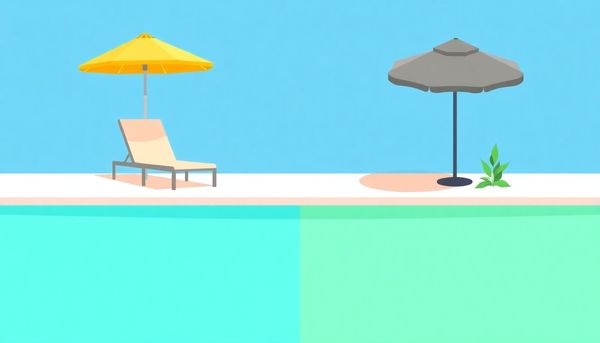
After a storm has swept through, leaving broken branches and scattered leaves in its wake, your pool becomes a battleground of debris and potential contamination. My neighbor, Mary, often felt overwhelmed after summer storms, staring at a pool that resembled a leaf soup more than a serene oasis. Yet this step—cleaning debris post-storm—is crucial for maintaining free chlorine levels.
Debris acts as a magnet for organic contaminants, which not only look unsightly but also consume free chlorine at an alarming rate. This is because your pool’s sanitizer diverts its energy to break down these newly introduced organic materials. As a result, chlorine levels drop, making your pool vulnerable to algae and bacteria.
The first order of business is to skim the surface with a net. This removes the bulk of floating leaves and twigs. Next, vacuuming the pool floor becomes essential, reaching those stubborn particles that have sunk. If your pool filter is overwhelmed by the influx, it’s wise to clean or backwash it to ensure optimal function.
Once the debris is gone, it’s time to test the water chemistry. Mary told me she'd often find her pH and alkalinity levels out of balance after a storm. Adjusting these parameters ensures your chlorine works efficiently. Finally, give your pool a good shock treatment. This hefty dose of chlorine will raise your free chlorine levels, ensuring your pool is not only visually clean but sanitized thoroughly.
After the storm has passed and the sky returns to its calm blue, there’s often a reminder left behind: a pool speckled with leaves, twigs, and assorted debris. This clutter isn’t just an eyesore; it’s a silent competitor, consuming the free chlorine before it can do its job of sanitizing your water. Balancing free chlorine levels begins with a thorough clean-up. Skim the surface with determination, capturing every leaf and twig like a seasoned hunter. Don’t overlook the pool bottom—use a pool vacuum to suck up the remnants that have settled there.
Removing debris is crucial because each organic piece is a miniature chlorine sponge, soaking up the free chlorine that should be guarding against bacteria and algae. This is especially important after a heavy storm, which can overload your pool with unwanted material and dilute the water, disrupting the delicate balance of chemicals. Once your pool is cleared of debris, it’s wise to check the pH and alkalinity levels. They act as the stabilizing forces in your water’s ecosystem, ensuring that the chlorine works effectively.
Picture this process as resetting the stage for a clean performance—each step, from skimming to testing, contributes to the grand finale: shocking your pool. With the debris gone and chemical levels adjusted, your pool is ready for the chlorine boost it needs. This act of shocking raises your free chlorine levels, reestablishing a sanitized, safe swimming zone.
After a storm has swept through, your pool might look more like a murky pond than a crystal-clear oasis. Storms can introduce a deluge of organic debris and contaminants, taxing your pool's chlorine reserves as they work overtime to sanitize the water. In this scenario, merely skimming the surface or filtering won't suffice to restore balance. The solution lies in a process aptly named "shocking."
When rainwater and runoff flood into your pool, they dilute the existing chlorine, causing free chlorine levels to drop, sometimes precipitously. This is where a good, solid shock treatment steps in. Begin by clearing out visible debris—leaves, twigs, and anything else that might have taken an uninvited swim. Once your pool is clean, it’s time to introduce a chlorine-based shock. This high-dose treatment is designed to raise free chlorine levels rapidly, sometimes tenfold, effectively neutralizing contaminants and rebalancing your water chemistry.
Remember, not all shocks are created equal. Selecting a calcium hypochlorite or "cal-hypo" type shock can be particularly effective post-storm. It not only replenishes chlorine levels but also helps maintain a stable, sanitized environment. For every 10,000 gallons of water, you should add three pounds of this shock to combat the sudden influx of contaminants. By addressing the aftermath of storms in this manner, you're not just restoring balance, but actively preventing algae blooms and bacteria buildup, ensuring your pool remains a sparkling refuge, ready for the next sunny day.
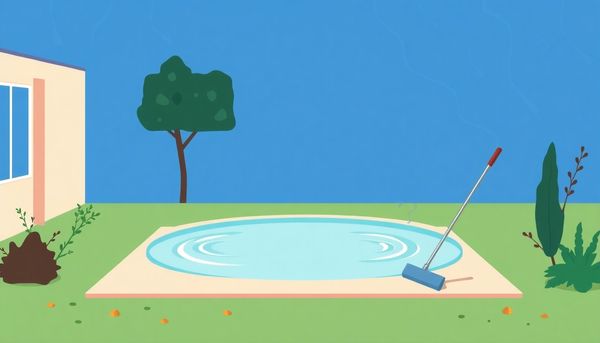
This article provided insights into maintaining your pool. Start your pool care journey today!
Want to become a pool maintenance expert? Our free Pool School course covers everything you need to know about pool care. From basic maintenance to advanced troubleshooting, you'll learn how to:
Join over 10,000 pool owners who have already transformed their pool care routine. Get started with our free Pool School course today!